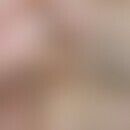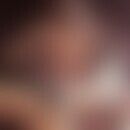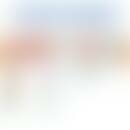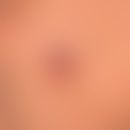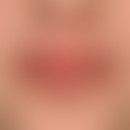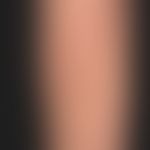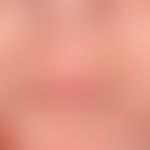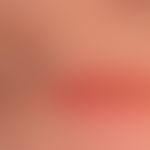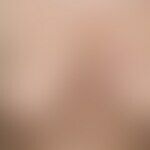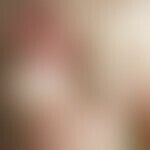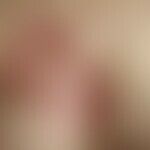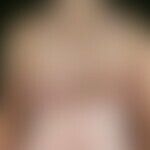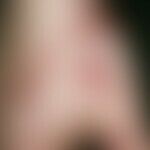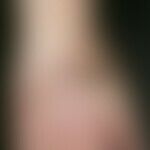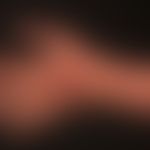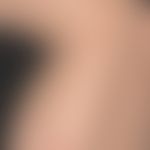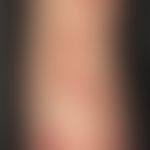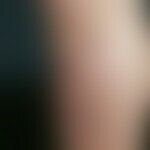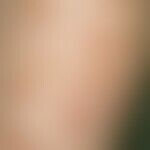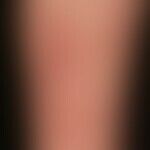Synonym(s)
DefinitionThis section has been translated automatically.
Artefacts, in the sense of psychodermatology, are defined as self-damaging actions on the skin which directly or indirectly lead to an objectifiable clinically relevant damage to the integument. The damaging action takes place in secrecy. The connection between clinical findings and the causative activity of the patient is often not immediately apparent to the doctor. The majority of these are so-called borderline patients, patients with clear personality disorders, an addiction problem or unprocessed experiences of abuse. By definition, secrecy, the deliberate concealment of the connections between the dermatological symptoms, belongs to the central essence of the artefact. A characteristic feature is that there is no skin disease which explains the symptoms and/or is secondary induced.
ClassificationThis section has been translated automatically.
Artifacts are divided into simulations, para-artefacts or pseudo-artefacts (artifacts that occur unconsciously [delusional disturbances]), real artifacts (impulse control disturbances).
- Simulations: Dermatoses in which the patient, motivated by external stimuli (e.g. pension claims), intentionally inflicts physical damage, so that a forensic environment of symptom presentation exists. The clinical picture of the simulative artifact is essentially influenced by the type of manipulation. The "inorganic" manipulative of the skin symptoms follows certain rules that can be captured according to a simple principle.
- Special forms are the Münchhausen Syndrome with the triad: hospital wandering, pseudologia phantastica and self-injury.
- Another variant is Münchhausen syndrome by proxy, in which children are usually injured by their caregivers in order to establish contact with medical practitioners.
- Para-artefacts (example: dermatocoenwahn): Dermatocoenwahn is a skin-related delusional disorder. The onset of the disease in late adulthood, especially in women, indicates the frequency of social isolation of these patients. Stressful life events have an intensifying influence on the disease. There is often a high level of suffering and a clear impairment of the quality of life and financial problems due to the constant preoccupation with the delusion and corresponding measures. From a differential diagnostic point of view, the disease does not cause any difficulties in classification, because the patient identifies himself/herself. He reveals himself with delusions by showing a bag of dandruff after a short bridging conversation. These scales are delusionally assigned to small parasites that cause various symptoms in the skin at certain times or permanently. It is also of no use whatsoever to explain to the patient that the bag of dandruff is not a parasite, but merely harmless dandruff. Such discussions are a waste of time. The patient also secretly accepts a chronic skin disease rather than a psychiatric illness. The skin itself shows different old scratching effects and nothing more. Scratch effects in places that are easily accessible to the patient. It is also remarkable how such patients handle their skin even during the doctor's consultation. The skin is apparently kneaded, squeezed or scratched between the fingers without feeling.
Notice! The patient reveals himself; the disease is close to consciousness!
- Real artefacts (example: trichotillomania): Real artefacts represent a group of diseases in which the patients build up psychological tension or neurotic conflicts. They lead to an uncontrollable urge to manipulate the skin. Impulse control disorders can be symptoms of obsessive-compulsive disorder, the symptoms can also occur in combination with an eating disorder. In conversation, a connection between the skin or mucous membrane changes and the chronic irritation is usually denied. The patient appears closed, uncooperative. The very different clinical pictures themselves appear as closed morphological units. Impulse control disorders include (in order of frequency):
- Trichotillomania (habitual hair pulling)
- Onychodystrophy (through nail biting)
- Acne excoriée (des jeunes filles) (exaggerated manipulation of a mild acne vulgaris)
- Morsicatio buccarum (nervous biting or sucking of the cheek mucosa)
- Cheilitis simplex due to habitual and constant licking of the lips (so-called lip eczema)
- Scratch attacks without itching (critical life events)
- Dryness eczema (due to compulsive continuous washing or brushing of the skin)
- Fake knuckle pads (pseudo knuckle pads) due to nervous hand rubbing.
Notice! Impulse control disorders lead to an uncontrollable urge to manipulate the skin.
You might also be interested in
EtiopathogenesisThis section has been translated automatically.
Artifacts have very different causes:
- Suction. Balance artifacts or artifacts in the narrower sense
:Creation of skin lesions to gain material advantages (e.g. pension) or to avoid unpleasant duties (e.g. military service, professional activity). - Mental disorders (especially neuroses): Deception may be present in order to gain idealistic advantages (e.g. affection of relatives), but it can also be completely absent as in Münchhausen syndrome, trichotillomania, trichotemnomania, onychophagia (parartifacts). In the broadest sense this also includes the dermatozoan delusion.
- Aggravation of an originally somatic basic disease, which eventually becomes independent as an independent disease. Typical examples are acne excoriée des jeunes filles, the maintenance of contact allergies through secret application of the allergen, perioral eczema through habitual licking of the region, degenerative hand eczema and exsiccosis of the skin through neurotic washing compulsion, recurrent erysipelas of the nose and ear region through habitual sharp-edged manipulation.
Often it is a combination of different causes. There are many different methods for triggering artifacts. Most of them are chemical substances (acids, alkalis) or instruments (needles, razor blades, constricting rubber bands), as well as mechanically by scratching, squeezing or by injecting irritating substances (turpentine, carbon particles, bacterial suspensions). The "artificial panniculitis" triggered by this differs from other panniculitis by its localisation (accessibility) and by the acuteity of the inflammation (often contaminated, usually melting panniculitis).
ManifestationThis section has been translated automatically.
LocalizationThis section has been translated automatically.
ClinicThis section has been translated automatically.
DiagnosisThis section has been translated automatically.
TherapyThis section has been translated automatically.
Rapid healing under zinc paste dressing or occlusive bandages (diagnostically almost proof of artificial mechanism), to promote wound healing, e.g. varicose veins In the case of balance artefacts, detection of the manipulation; for the other forms, psychotherapy is in the foreground, see Münchhausen syndrome. In case of dermatocoen delusion a one-time controlled antiparasitic therapy should be performed if necessary.
Note(s)This section has been translated automatically.
- The field of artificial skin diseases is wide and ranges from the pure "classic" artefact to dermatological (and internal medicine) clinical pictures in which an artificial component triggers, influences or even maintains the skin changes substantially or marginally, consciously or unconsciously. From a morphological point of view, the exogenous linear or other "strange" figures imprinted on the skin generally do not present any diagnostic difficulties.
- Special attention must be paid to the group of "self inflicted skin injuries" in children, which are often based on intellectual impairments or developmental disorders (e.g. Lesch-Nyhan syndrome, Cornelia de Lange syndrome, etc.) Furthermore, a battered-child syndrome should also be considered for differential diagnosis.
- If there is a pension request and thus a financial interest in maintaining the artefact, the patient will present this request after a certain period of time. If the artifact is based on a mental disorder, certain body areas with a demonstrative signal character will be preferred.
Incoming links (26)
Automutilation; Back of the hand edema, chronic traumatic; Battered-child syndrome; Dermatitis artefacta; Dermatitis factitia; Dermatoses through self-harm; Dermatozoa madness; Excoriation, neurotic; Hand dermatitis chronic; Knuckle pads, fake; ... Show allOutgoing links (17)
Acne excoriée; Battered-child syndrome; Cheilitis simplex; Cornelia de lange syndrome; Dermatozoa madness; Knuckle pads, fake; Lesch-nyhan syndrome; Lip lick eczema; Lipogranuloma, traumatogenic; Morsicatio buccarum; ... Show allDisclaimer
Please ask your physician for a reliable diagnosis. This website is only meant as a reference.
